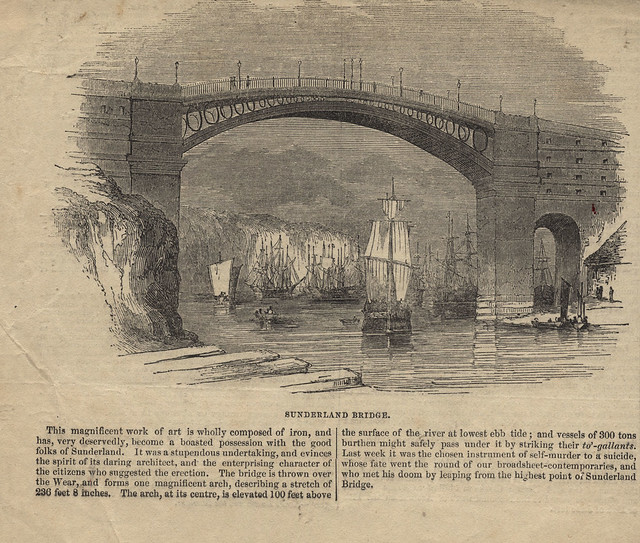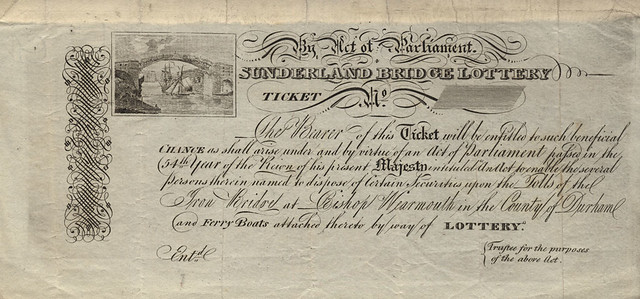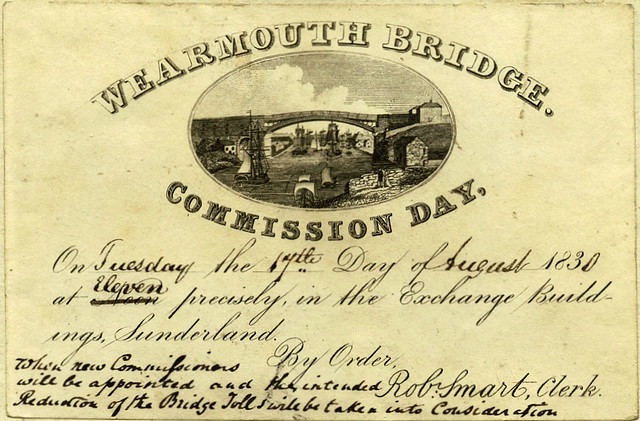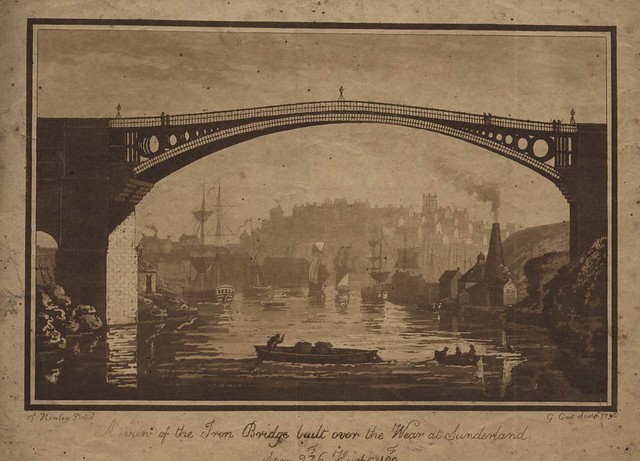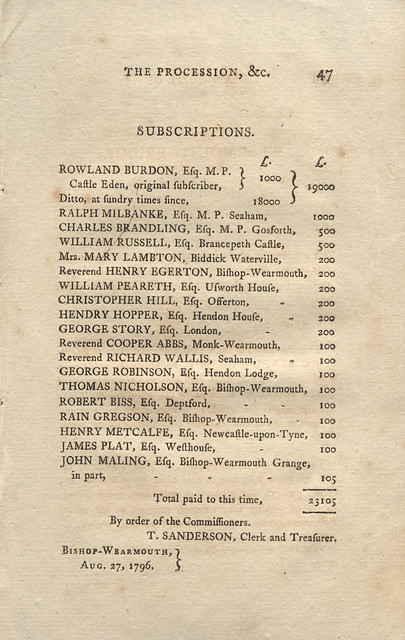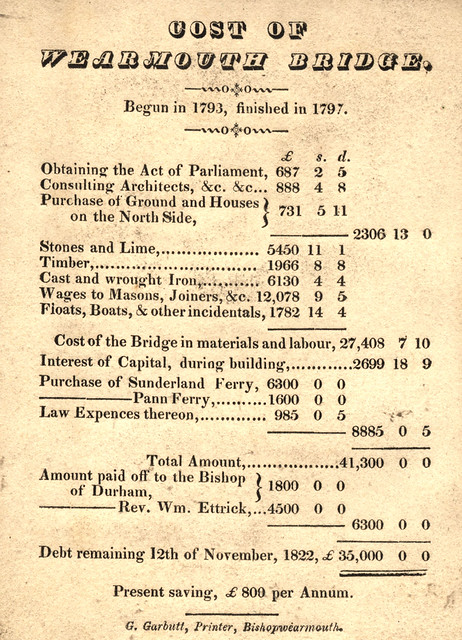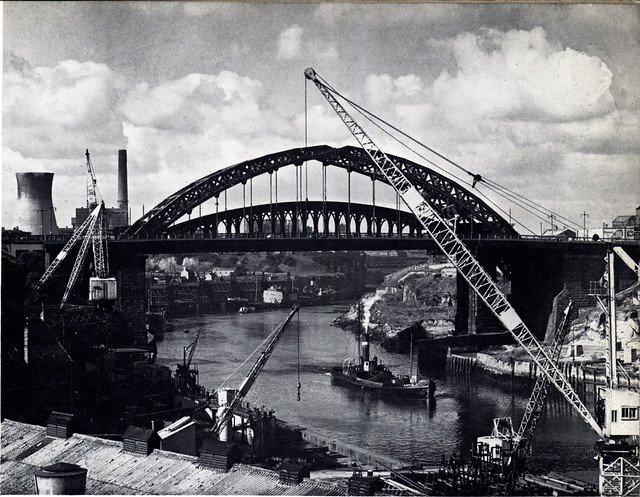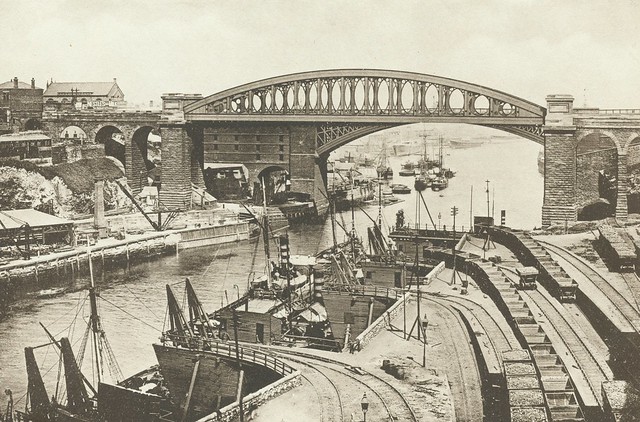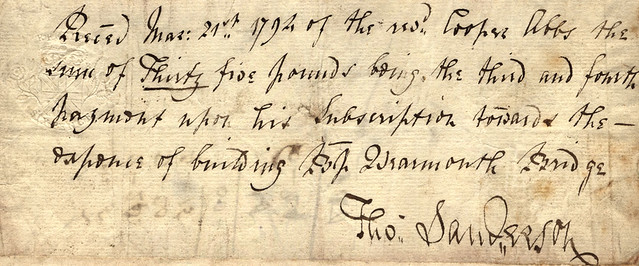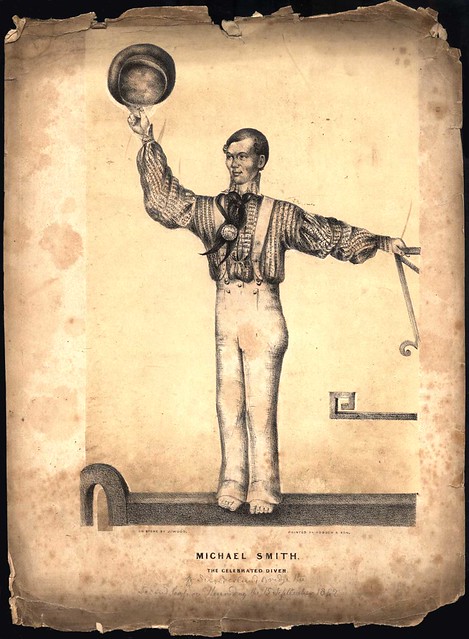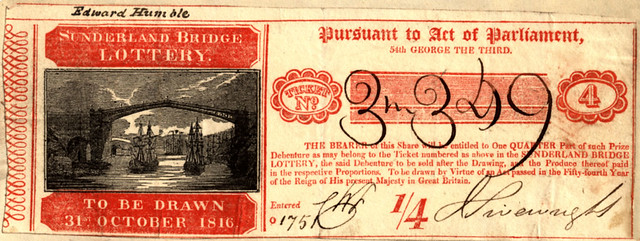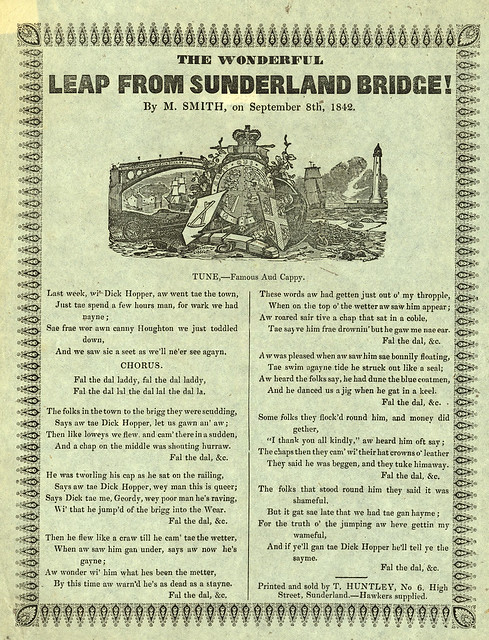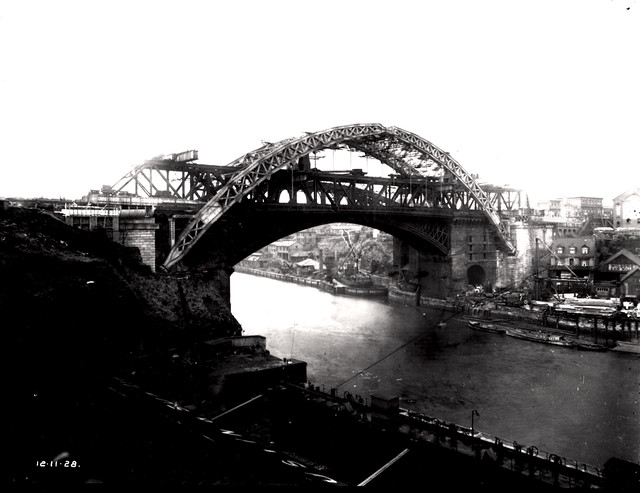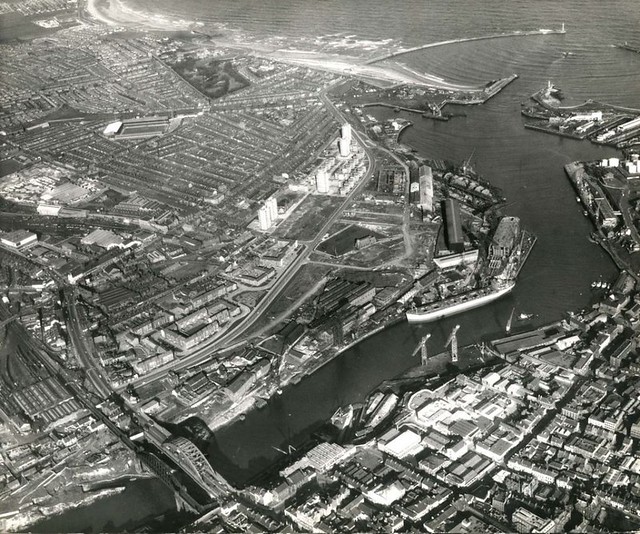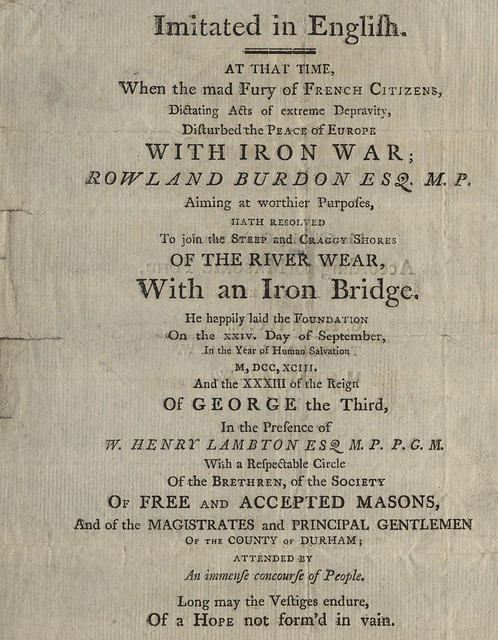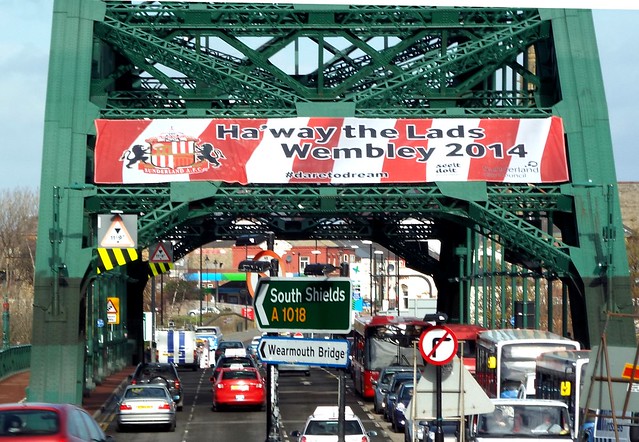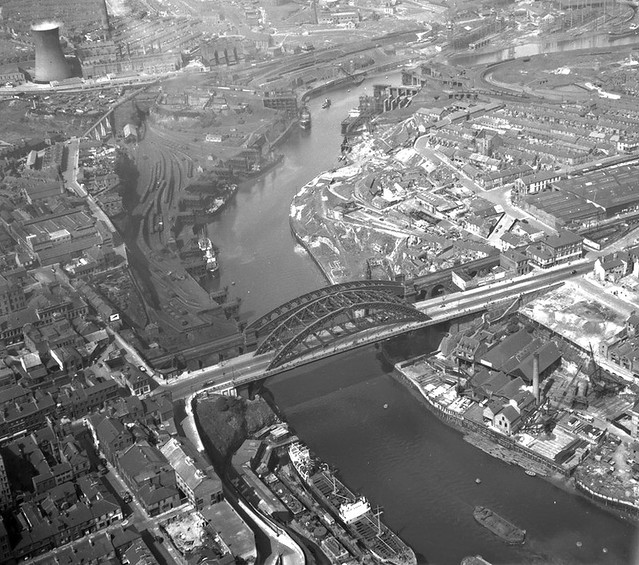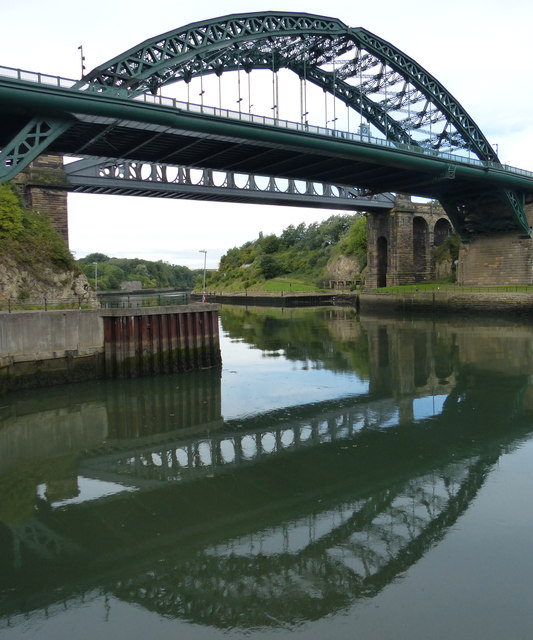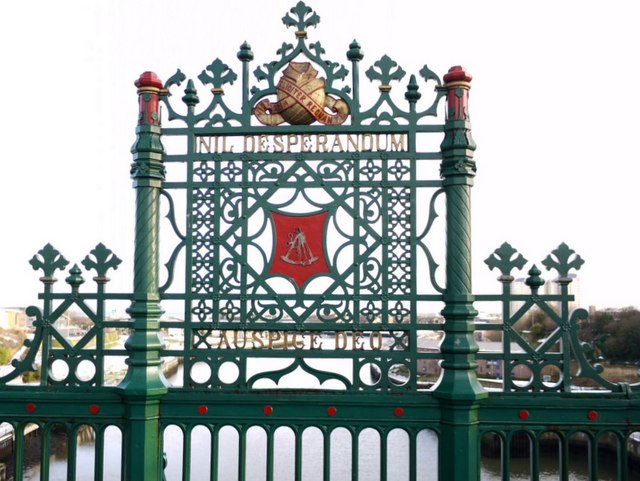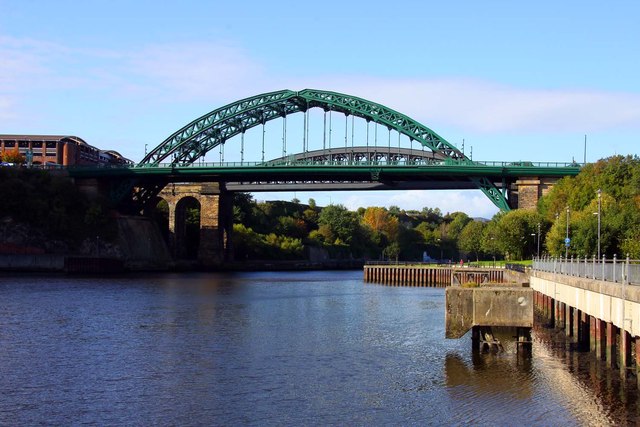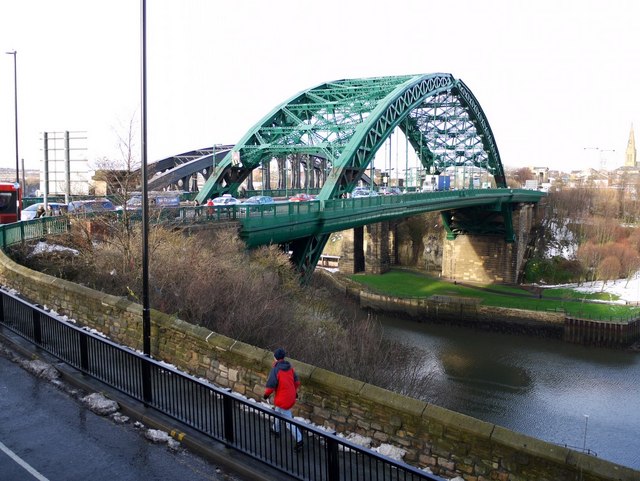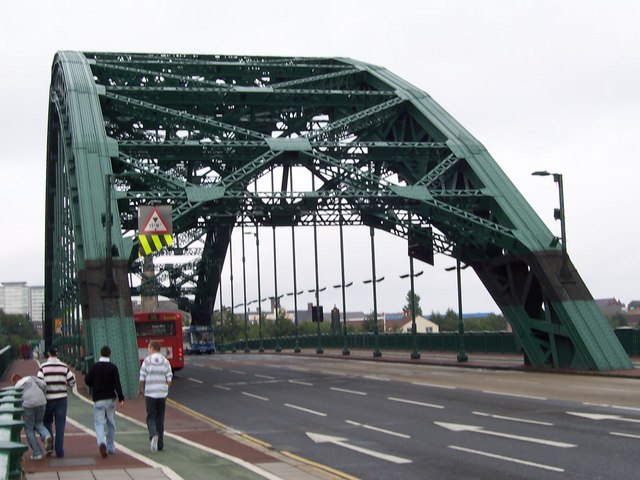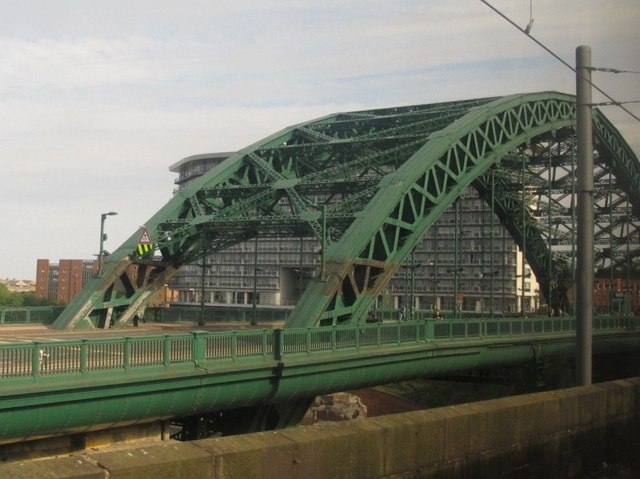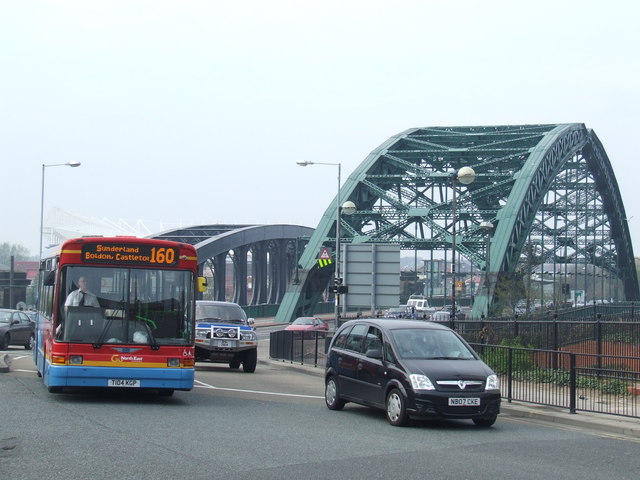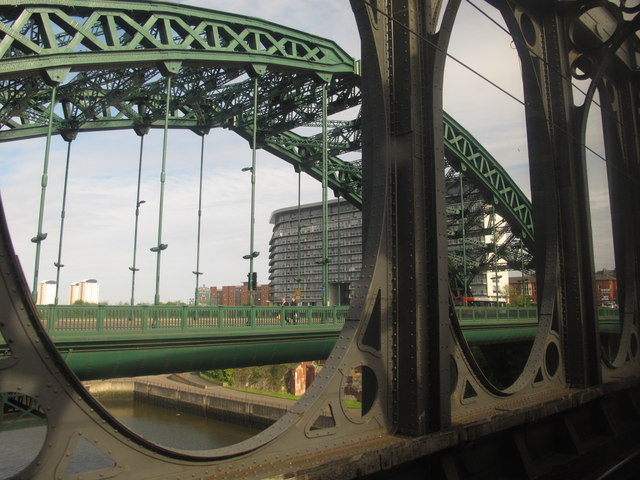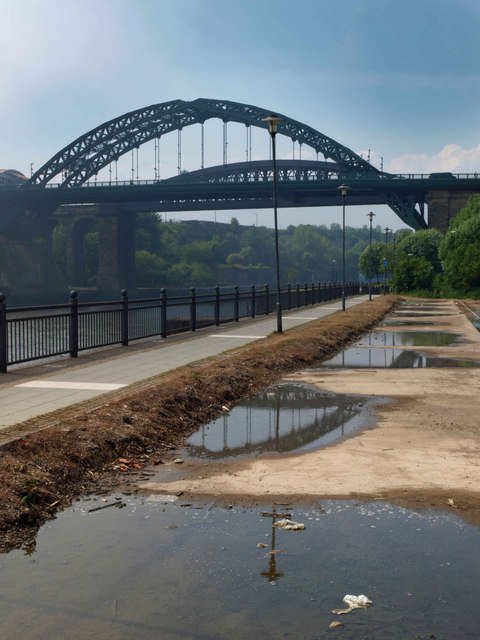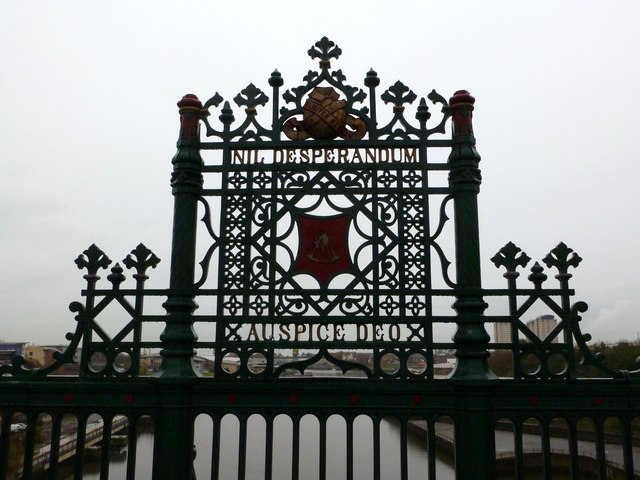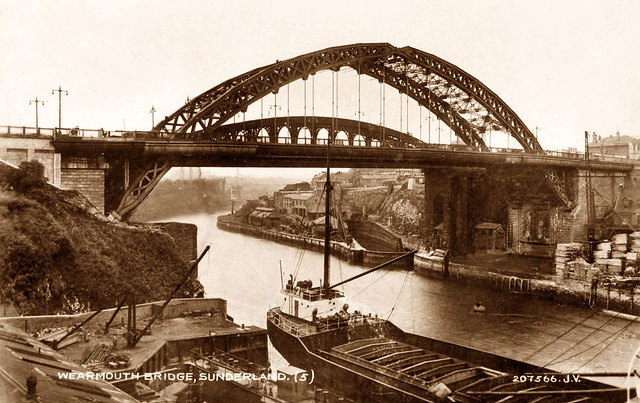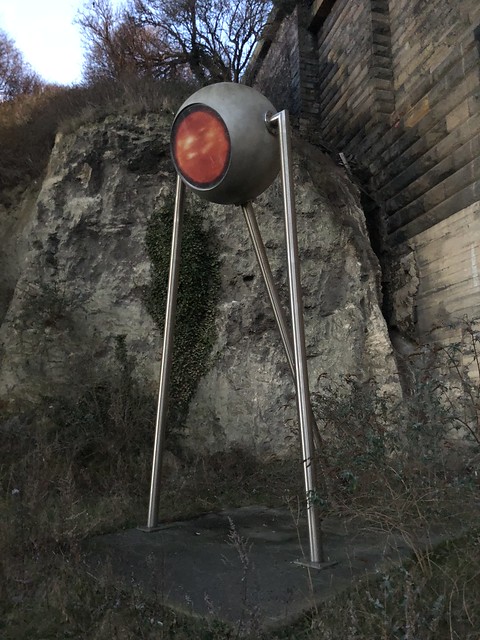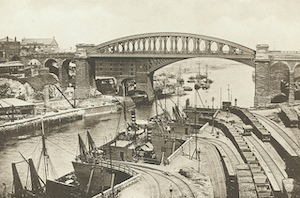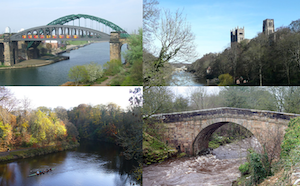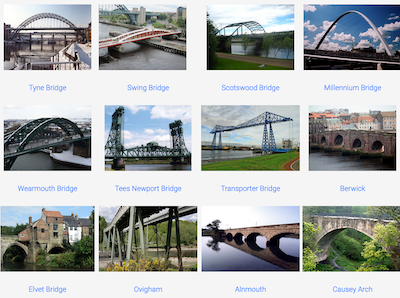Topics > Tyne and Wear > Sunderland > Wearmouth Bridge
Wearmouth Bridge
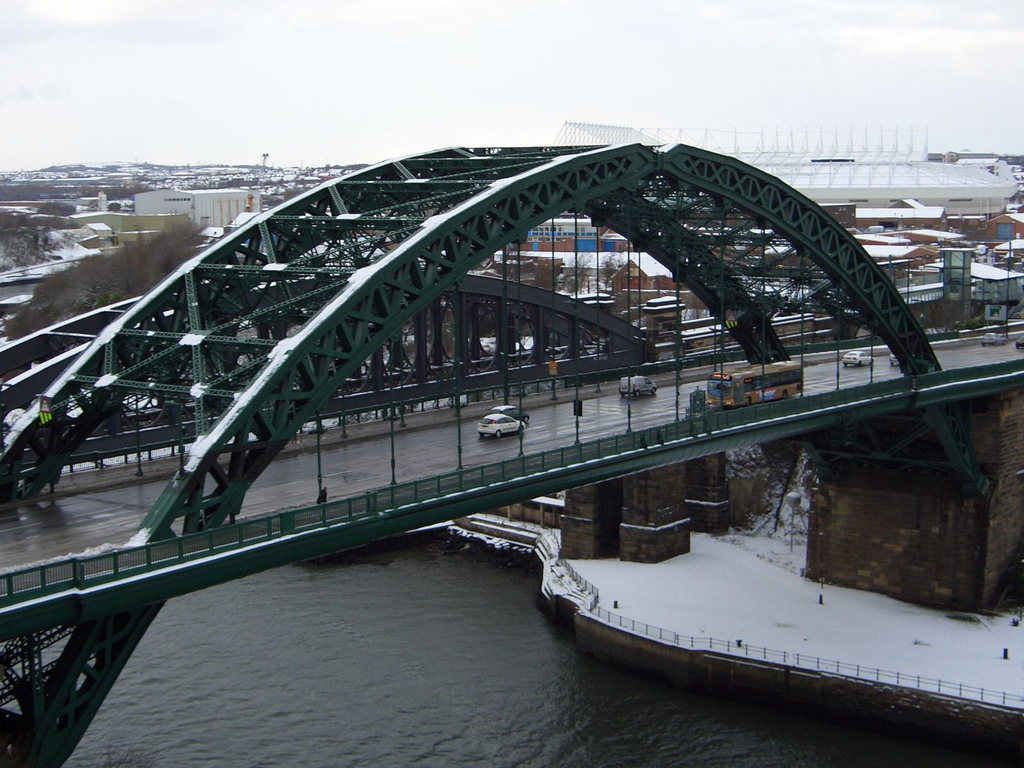 The Wearmouth Bridge crosses the River Wear in Sunderland. The current bridge was built 1927 to 1929 and replaced an earlier cast-iron bridge in the same place which had opened in 1796, and was later reconstructed in 1857. In 1842 Micheal Smith jumped off the Wearmouth Bridge for a stunt. Amazingly he survived, but was arrested for begging as the crowds who watched started giving him money!
The Wearmouth Bridge crosses the River Wear in Sunderland. The current bridge was built 1927 to 1929 and replaced an earlier cast-iron bridge in the same place which had opened in 1796, and was later reconstructed in 1857. In 1842 Micheal Smith jumped off the Wearmouth Bridge for a stunt. Amazingly he survived, but was arrested for begging as the crowds who watched started giving him money!The first bridge, 1796–1929
The first Wearmouth Bridge opened in 1796, with the foundation stone having been laid in September 1793. It was sponsored by Rowland Burdon, the MP, and designed by Thomas Wilson. According to the plaque on the current bridge, its construction "proved to be a catalyst for the growth of Sunderland," since access between Monkwearmouth and Bishopwearmouth had previously only been by ferry, with the nearest bridge at Chester-le-Street. There was originally a toll for traffic and pedestrians, although tolls for pedestrians were abolished in 1846.
It was the second iron bridge built after the famous span at Ironbridge, but was over twice as long with a nominal span of 240 feet, and only three-quarters the weight. Indeed, at the time of building, it was the biggest single-span bridge in the world (72 m), matching the collapsed Trezzo Bridge. It opened to traffic on 9 August 1796, having cost a total of about £28,000.
1805 repair and 1857 reconstruction
In 1805 the bridge had to be repaired after heat from the sun caused some of the cross tubes to fall out.
From 1857 to 1859 it was reconstructed by Robert Stephenson, who stripped the bridge back to its six iron ribs and levelled the hump in its middle by raising the abutments. The bridge was reopened in March 1859, with the toll completely abolished in 1885.
The current bridge, 1929–present
To accommodate the growing volume of traffic, construction began on the current bridge in 1927. It was designed by Mott, Hay and Anderson and fabricated by the famous bridge building firm of Sir William Arrol & Co. at their Dalmarnock Ironworks in Glasgow (they also built the famous Forth Rail Bridge and the steel structure of Tower Bridge in London). The new bridge was built around the old one to allow the road to remain open. It was opened on 31 October 1929 by the Duke of York (who would later become King George VI).
The cost of the bridge amounted to £231,943 of which £12,000 was spent on dismantling the old bridge.
It is described by Nikolaus Pevsner, the recognised authority, as being uninteresting, unlike the first, which he calls "a structure of superb elegance".
The adjoining railway bridge was built in 1879, and extended the railway south from Monkwearmouth to the centre of Sunderland.
Further up the river, another bridge, the Queen Alexandra Bridge, was completed in 1909, linking the areas of Pallion and Southwick.
The bridge carries the A183 road between Chester-le-Street and South Shields and the A1018 which was the old route of the A19 until the bypass was built leading to the Tyne Tunnel. It is Grade II listed on the National Heritage List for England.
Visit the page: Wearmouth Bridge for references and further details. You can contribute to this article on Wikipedia.
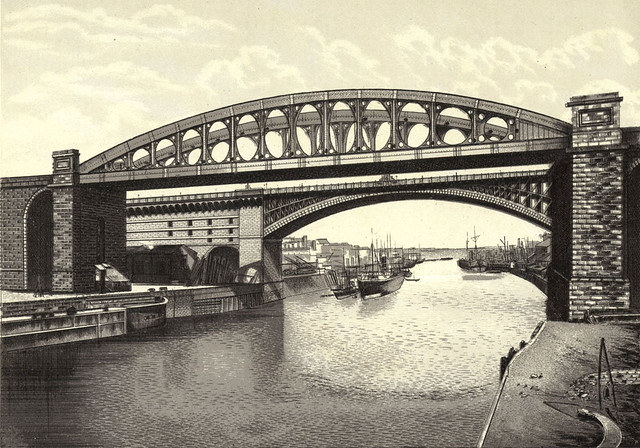
from Sunderland Public Libraries (flickr)
Wearmouth and Railway Bridges 1900
Pinned by Simon Cotterill

from Sunderland Public Libraries (flickr)
Wearmouth Bridge and Railway Bridge c.1880
Pinned by Simon Cotterill
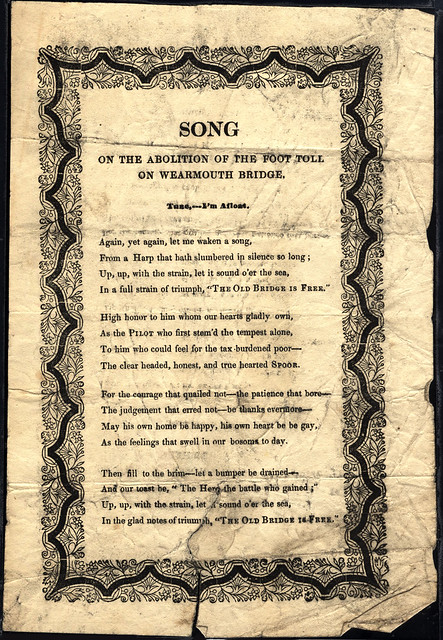
from Sunderland Public Libraries (flickr)
A Song about the removal of the Toll
Pinned by Simon Cotterill
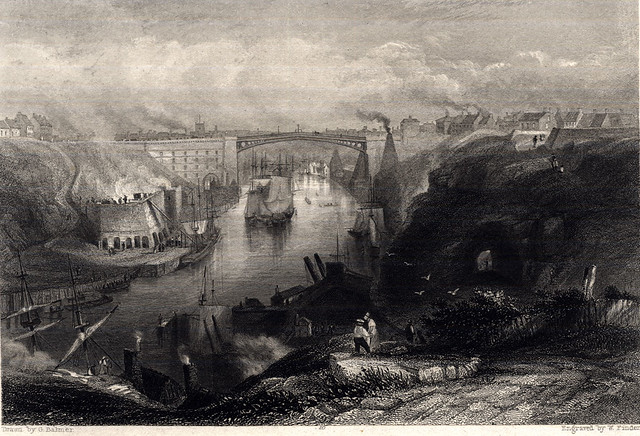
from Sunderland Public Libraries (flickr)
Wearmouth Bridge from Westward c.1800
Pinned by Simon Cotterill
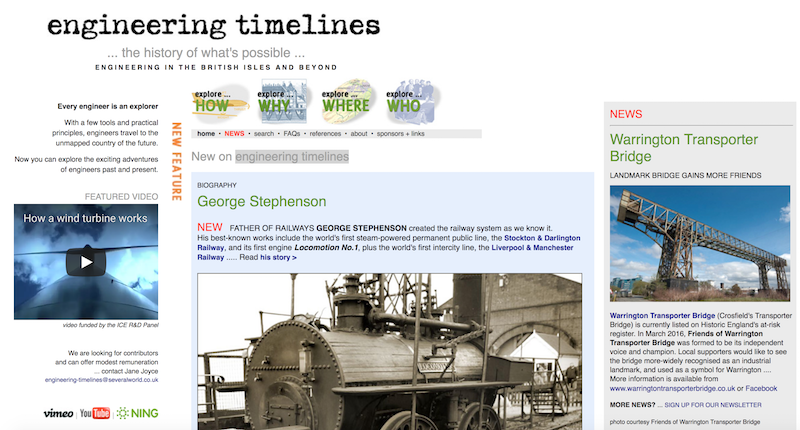
from http://www.engineering-timeli…
Wearmouth Bridge (1796)
- "ntil the Wearmouth iron bridge (now demolished) was built at Sunderland in 1796, ferries were the only way to cross the River Wear downstream of Chester-le-Street. It was constructed using …
Added by
Simon Cotterill

from https://historicengland.org.u…
WEARMOUTH BRIDGE - List Entry
- "Road bridge with adjacent steps at NE. 1929. By Mott, Hay & Anderson, resident engineer GL Groves, contractor Sir W Arroll & Co. Ltd., Glasgow. Abutments rock-faced sandstone, with reinforced …
Added by
Simon Cotterill

from Youtube (youtube)
Last tram to cross Wear Bridge at Sunderland (1929)
Pinned by Simon Cotterill


from Sunderland Public Libraries (flickr)
Wearmouth and Railway Bridges 1900
Pinned by Simon Cotterill

from Sunderland Public Libraries (flickr)
Wearmouth Bridge and Railway Bridge c.1880
Pinned by Simon Cotterill

from Sunderland Public Libraries (flickr)
A Song about the removal of the Toll
Pinned by Simon Cotterill

from Sunderland Public Libraries (flickr)
Wearmouth Bridge from Westward c.1800
Pinned by Simon Cotterill

from http://www.engineering-timeli…
Wearmouth Bridge (1796)
- "ntil the Wearmouth iron bridge (now demolished) was built at Sunderland in 1796, ferries were the only way to cross the River Wear downstream of Chester-le-Street. It was constructed using …
Added by
Simon Cotterill

from https://historicengland.org.u…
WEARMOUTH BRIDGE - List Entry
- "Road bridge with adjacent steps at NE. 1929. By Mott, Hay & Anderson, resident engineer GL Groves, contractor Sir W Arroll & Co. Ltd., Glasgow. Abutments rock-faced sandstone, with reinforced …
Added by
Simon Cotterill

from Youtube (youtube)
Last tram to cross Wear Bridge at Sunderland (1929)
Pinned by Simon Cotterill

